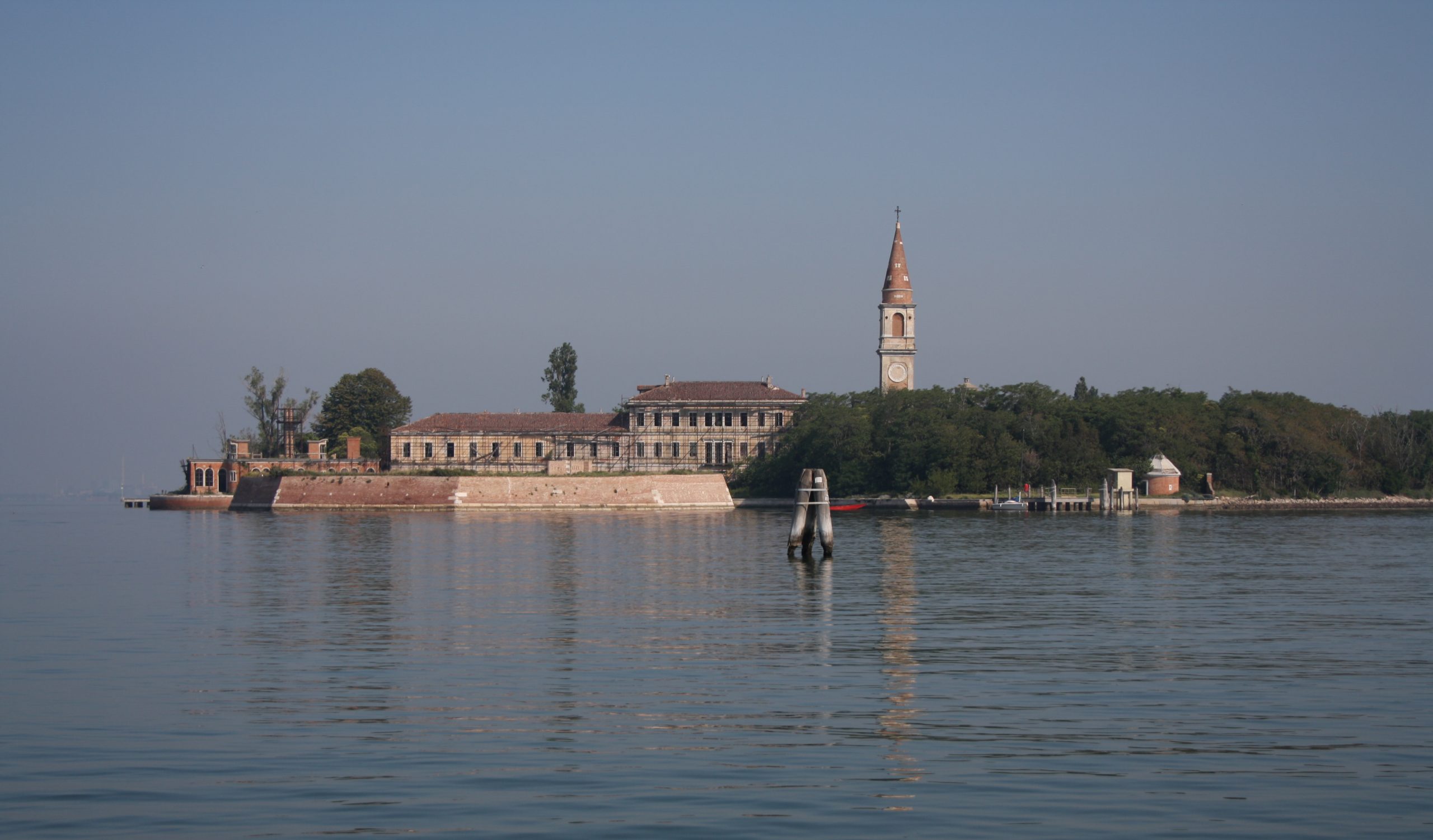Of the many islands surrounding Venice, there is one located to the south, quite close to the shoreline of Lido. It is the island of Poveglia, referred to by some as “the island of terror.” Venetians prefer not to discuss the island nor answer questions concerning it. They simply remark that it is harmless to those who keep their distance.
It has been said that “…while the rest of Venice is governed by Comune di Venezia, the island of Poveglia remains firmly in the jurisdiction of the Devil.” It has also been said by those who know it well, “Quando muore un cattivo, si sveglia a Poveglia:” Translated: “When an evil man dies, he awakens on Poveglia.”
There seems to be something foreboding about Poveglia Island, a kind of presence, according to some who have been there. Whether one cares to believe it is up to the individual. Presently, the island is owned by the Italian Government.
Poveglia sits upon the water with its bell tower protruding into the sky. It is deceivingly peaceful and serene with a plush overabundance of greenery. Yet, notwithstanding the many frightening stories which abound, it is invitingly tempting to the audaciously curious who might find it doubly intriguing to pay it a visit, especially since visiting the island is prohibited by law.
Every once in a while, the young and the restless, seeking thrills, manage to outfox the police patrol boats and gain access to the island. Those who have managed to set foot upon Poveglia have also vowed never to return. Their expectation of fun seems to vanish abruptly, replaced by specters which cause the hairs to stand up on the back of the neck. They talk of the island’s “heavy atmosphere of evil,” of being surrounded by a chorus of unceasing screams and tortured moans which come from nowhere and from everywhere, permeating the island and making even the shortest stay unbearable.
The island of Poveglia, when viewed from the air, appears to be shaped much like a crude arrowhead pointed southward. Long ago, a canal was cut east and west through the center of the island, separating the northern and southern halves. Between both halves is a single connecting pedestrian bridge. The shorelines of the southern half of the island come together at the southernmost portion, giving the arrowhead a rounded tip, just above a tiny dot of an island in the shape of an octagon and giving Poveglia the overall appearance of an over-inflated exclamation point.
The origin of Poveglia Island’s haunting is traced back to a time when Venice enjoyed an abundance of trade and wealth. Ships from all parts of the world brought both benefits and pestilence. According to Chinese records, the Bubonic Plague or Back Death was believed to have originated in Mongolia around 1346 and mysteriously spread when Italian merchants attempting to avoid the plague, unwittingly carried it with them as they fled on their ships. What the merchants did not know was that the disease was carried by thousands of fleas on rats which had taken up residency on merchant ships: Many of those ships were bound for Venice.
However, flea-bitten rats were not entirely to blame for the spread of the disease. Much of it was spread by people fleeing from an infected area to an uninfected area. Eventually, the plague spread outward to the rest of Europe, killing a third of the human population. Venice was ripe for just such an event and was destined to bear its share of misery. Many people were becoming sick, so Poveglia was chosen as the island for quarantine.
Quarantine is the process of separating infected people from healthy ones for a period of forty days. The idea dates as far back as the Old Testament when rules existed to keep lepers isolated from the rest of the population. But it wasn’t until the plague of the fourteenth century that Venice established the first formal system of quarantine, a word derived from the Latin word meaning “forty.”
In theory, a system of quarantine would have been an ideal method of handling this deadly situation. If it worked out as planned, the infected victims, who became well again, would be allowed to reenter society. But it didn’t work out that way. For the most part, no one could have anticipated the speed with which the plague came upon them. It was no longer a question of temporarily separating the diseased from the healthy. For many, the trip to Poveglia was a death sentence.
Detachments of troops were dispatched to patrol canals, alleys and tenements in and around Venice in search of anyone exhibiting the slightest symptom of the plague. Those with symptoms or perceived symptoms, were forced onto barges to be ferried to Poveglia. Families were torn apart. Husbands and wives were separated from their children. Anyone perceived to have symptoms of the plague was carted off and loaded on to barges.
Upon reaching Poveglia, passengers were unloaded onto the landing dock and transferred to new custodians. The dead were moved by handcart over the bridge to the location of the plague pits. The disease spread with a vengeance and the bodies continued coming. The island had become so overcrowded with plague victims that many of the living, considered to be as good as dead, were simply thrown into the burial pits or onto bonfires to be incinerated along with those already dead.
As the plague intensified, panic escalated to the point that those showing the slightest symptoms were taken from their homes kicking and screaming and thrown onto piles of rotting corpses and set ablaze. The fires that burned at that time would burn once more in the 1630s when the plague again swept through Venice.
Eventually, the crisis subsided and the disease dissipated. Calm was once again restored in Venice and the island of Poveglia enjoyed a period of tranquility of about three hundred years. However, during all that time, it is unclear if the island was ever rumored to be haunted. If Poveglia was indeed haunted, it seemed that no one was aware of it, because for centuries, it remained uninhabited and consequently, there were no ghosts to be seen … that is, until after 1922, when the island became home to a psychiatric hospital.





























